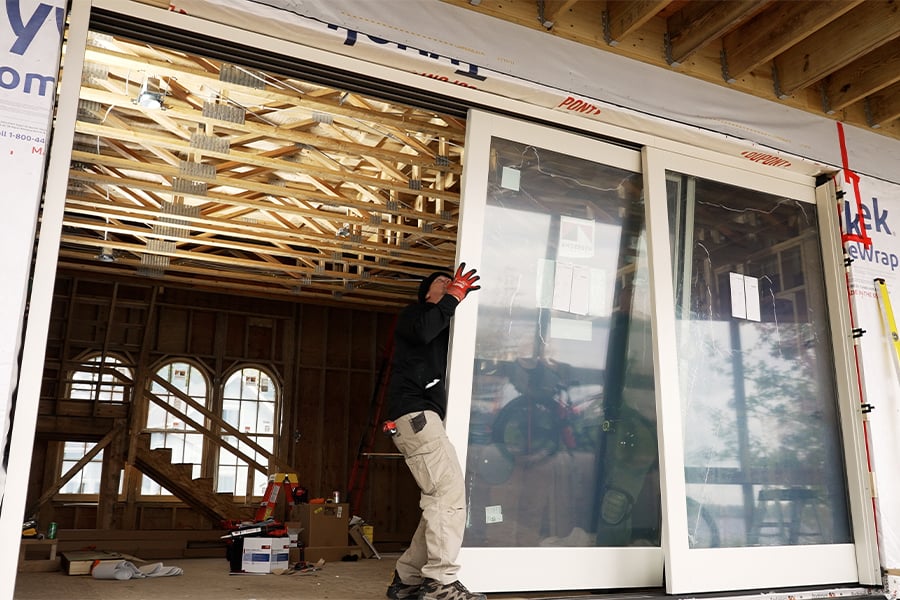Inside a MultiGlide™ Door installation

Installation recap
Inspecting the rough opening
Flashing the rough opening
They sealed the bottom of the sill, taking care to seal each seam and the flashing tape with sealant. Then, they flipped it over and applied weight until the sealant oozed out. Finally, they screwed the sill to the wood subfloor and sealed around the screw holes.
Tip: When lining up the sill in the rough opening, you can reference off the outside or inside.
Installing the interior riser back dam
Installing the side jamb
Installing the pocket interlock
Installing panels and sealing the pocket
Installing the motor
This installation differed from the norm in that the construction of the space didn’t allow for the motor to fit on the pocketing end. So, they installed the motor in the wall next to the locking jamb with a special pulley on the pocketing end. They ran the belt around the pulleys, corrected for the right length, cut it, and secured both ends to a term buckle.
Tip: To make the process of aligning the belt easier, they loosened the set screws on the motor so it would float. Once the belt was in place, they went back and tightened the screws on the motor.
Testing the motor
Connecting the motor to the door
Once they were satisfied the belt was operating properly, they closed the door manually and connected it to the motor.
Up next: Dig into more details of the MultiGlide Door, or get some expert tips on selecting the right big door for your project.